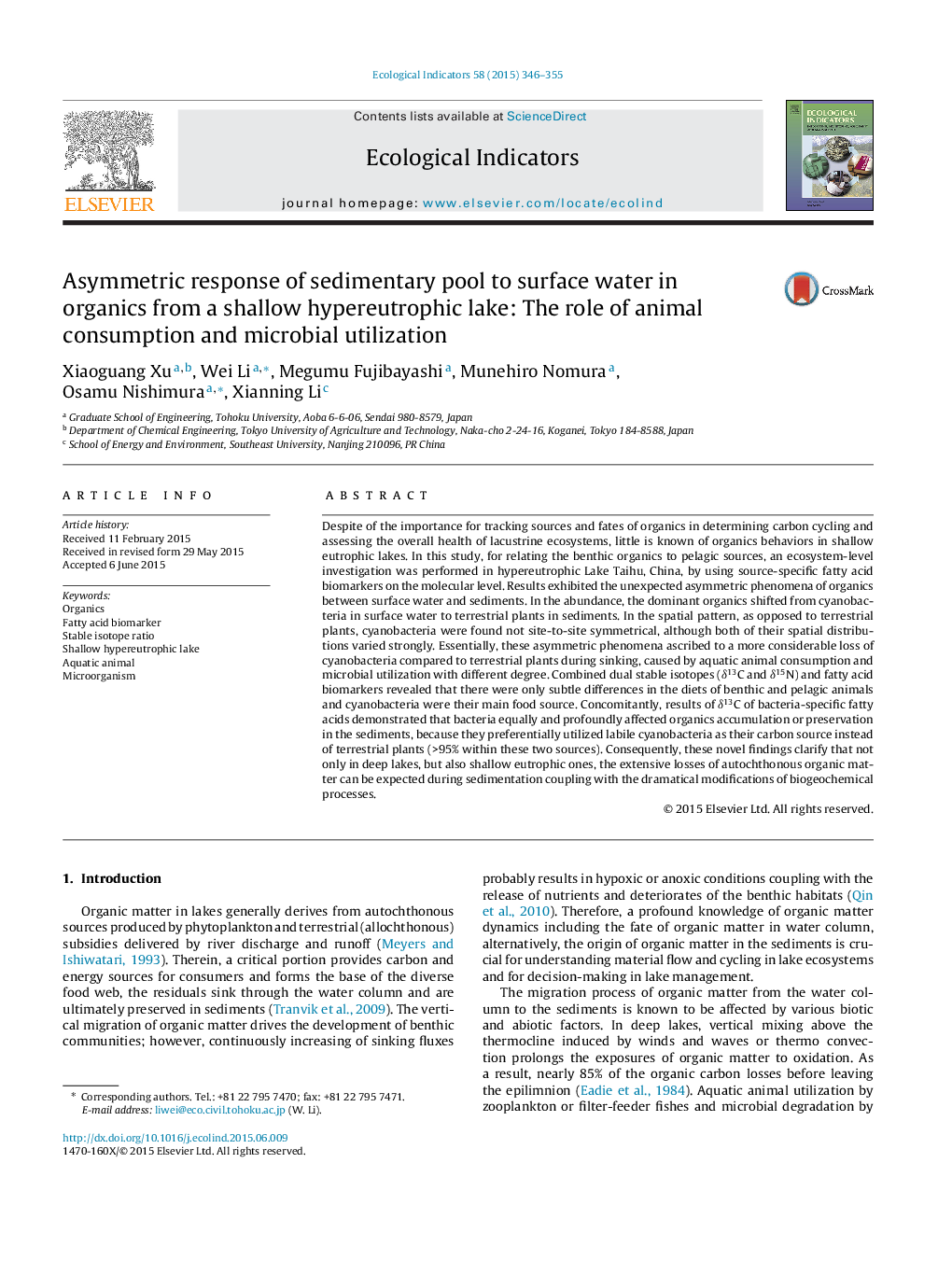| کد مقاله | کد نشریه | سال انتشار | مقاله انگلیسی | نسخه تمام متن |
|---|---|---|---|---|
| 6294285 | 1617143 | 2015 | 10 صفحه PDF | دانلود رایگان |
عنوان انگلیسی مقاله ISI
Asymmetric response of sedimentary pool to surface water in organics from a shallow hypereutrophic lake: The role of animal consumption and microbial utilization
ترجمه فارسی عنوان
واکنش نامتقارن استخر رسوب به آب های سطحی در ارگانیسم ها از دریاچه کم عمق دریا: نقش مصرف حیوانات و استفاده از میکروبی
دانلود مقاله + سفارش ترجمه
دانلود مقاله ISI انگلیسی
رایگان برای ایرانیان
کلمات کلیدی
ارگانیک، بیومارکر اسید چرب، نسبت ایزوتوپ پایدار، دریاچه هیدروتروفی کم عمق، حیوانات آبزی میکروارگانیسم
موضوعات مرتبط
علوم زیستی و بیوفناوری
علوم کشاورزی و بیولوژیک
بوم شناسی، تکامل، رفتار و سامانه شناسی
چکیده انگلیسی
Despite of the importance for tracking sources and fates of organics in determining carbon cycling and assessing the overall health of lacustrine ecosystems, little is known of organics behaviors in shallow eutrophic lakes. In this study, for relating the benthic organics to pelagic sources, an ecosystem-level investigation was performed in hypereutrophic Lake Taihu, China, by using source-specific fatty acid biomarkers on the molecular level. Results exhibited the unexpected asymmetric phenomena of organics between surface water and sediments. In the abundance, the dominant organics shifted from cyanobacteria in surface water to terrestrial plants in sediments. In the spatial pattern, as opposed to terrestrial plants, cyanobacteria were found not site-to-site symmetrical, although both of their spatial distributions varied strongly. Essentially, these asymmetric phenomena ascribed to a more considerable loss of cyanobacteria compared to terrestrial plants during sinking, caused by aquatic animal consumption and microbial utilization with different degree. Combined dual stable isotopes (δ13C and δ15N) and fatty acid biomarkers revealed that there were only subtle differences in the diets of benthic and pelagic animals and cyanobacteria were their main food source. Concomitantly, results of δ13C of bacteria-specific fatty acids demonstrated that bacteria equally and profoundly affected organics accumulation or preservation in the sediments, because they preferentially utilized labile cyanobacteria as their carbon source instead of terrestrial plants (>95% within these two sources). Consequently, these novel findings clarify that not only in deep lakes, but also shallow eutrophic ones, the extensive losses of autochthonous organic matter can be expected during sedimentation coupling with the dramatical modifications of biogeochemical processes.
ناشر
Database: Elsevier - ScienceDirect (ساینس دایرکت)
Journal: Ecological Indicators - Volume 58, November 2015, Pages 346-355
Journal: Ecological Indicators - Volume 58, November 2015, Pages 346-355
نویسندگان
Xiaoguang Xu, Wei Li, Megumu Fujibayashi, Munehiro Nomura, Osamu Nishimura, Xianning Li,
